If you’re just starting to get into ski touring, chances are you’ll start reading ski touring reports on sites like Camptocamp, the different alpine club websites or even blogs like ours. All these sites use different kinds of grading to assess the difficulty of a ski touring outing. So it’s important to understand what these scales represent, so that as you ski more and more, you can get a clearer idea of what you’re actually capable of.
Below you’ll find the different grading systems I’ve seen most often on different guidebooks / websites. I hope you find it useful.
The Toponeige grading
This is the grading system I’ve seen most often on the various ski touring websites. This method was popularized by Volodia Shahshahani (author of the first Toponeige book published by Volopress, a classic ski touring collection) and is, in my opinion, the most comprehensive. Therefore, it’s also the one I’ve decided to use on our blog.
This grading system is made up of 3 main scales which are combined to give the toponeige grading:
- Technical skiing grade (downhill grade)
- Alpine grade (uphill grade)
- Exposure grade
Technical skiing grade (downhill grade)
This scale is divided into 5 levels. The first 4 each have 3 subdivisions (2.1, 2.2 or 2.3), while the 5th level remains open to the top, with a maximum of 5.6 for now. Here’s what each level stands for:
- 1.1, 1.2, 1.3: Beginner runs with a gradient of less than 30 degrees, a total elevation difference of less than 800m, no obstacles (narrow passages, trees) and a low avalanche risk.
- 2.1, 2.2, 2.3: Technically not very difficult descent with slopes below 35 degrees, but significant vertical drop or exposure.
- 3.1, 3.2, 3.3: Downhill in alpine terrain with longer slopes at 35 degrees, perhaps even short sections at over 40 degrees, passing through fairly dense forests. Exposure is important and an excellent level of skiing is required.
- 4.1, 4.2, 4.3: We move into couloir skiing with long slopes (over 200m) above 40 degrees with short sections at 45-50 degrees (crampons and ice axe may be necessary). Rugged mid-mountain terrain with dense forests.
- 5.1, 5.2, 5.3… (open to the top): Extreme skiing with long 45-50 degree slopes (over 300m) or passages at over 50 degrees (over 100m). You’ll need to have your crampons and ice axe in your bag (and a small rope too). This level is open to very high level skiers for routes of extreme difficulty.
To give you an idea, here’s an example of a couloir under the Vignettes hut in Switzerland, graded 4.2:
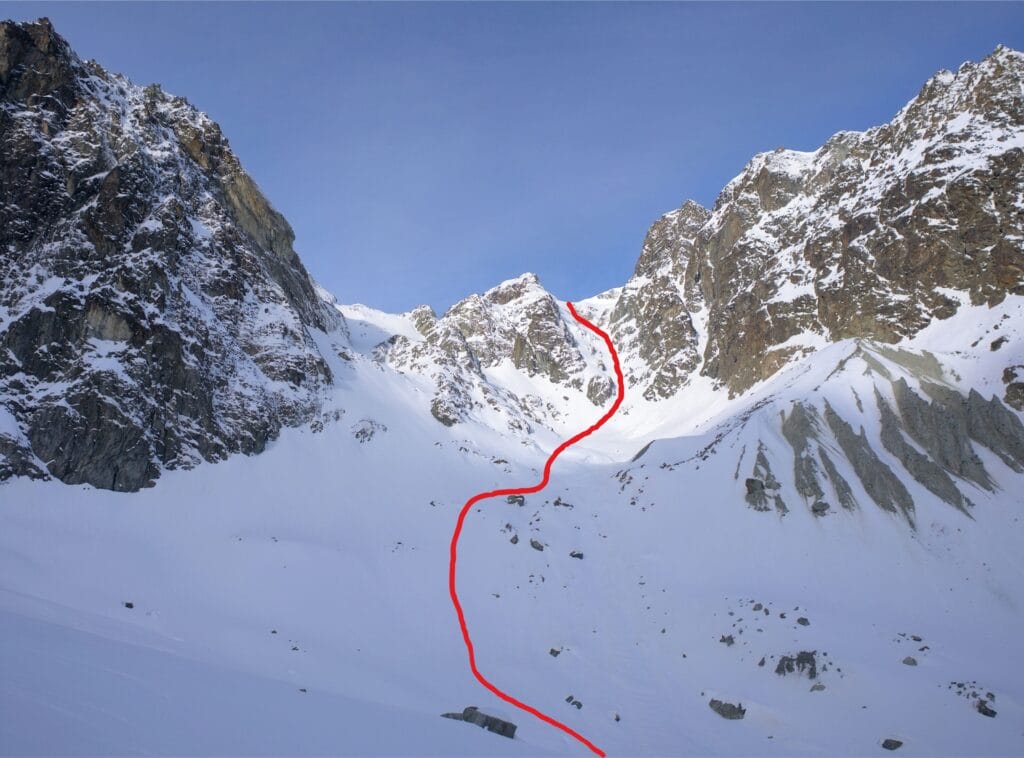
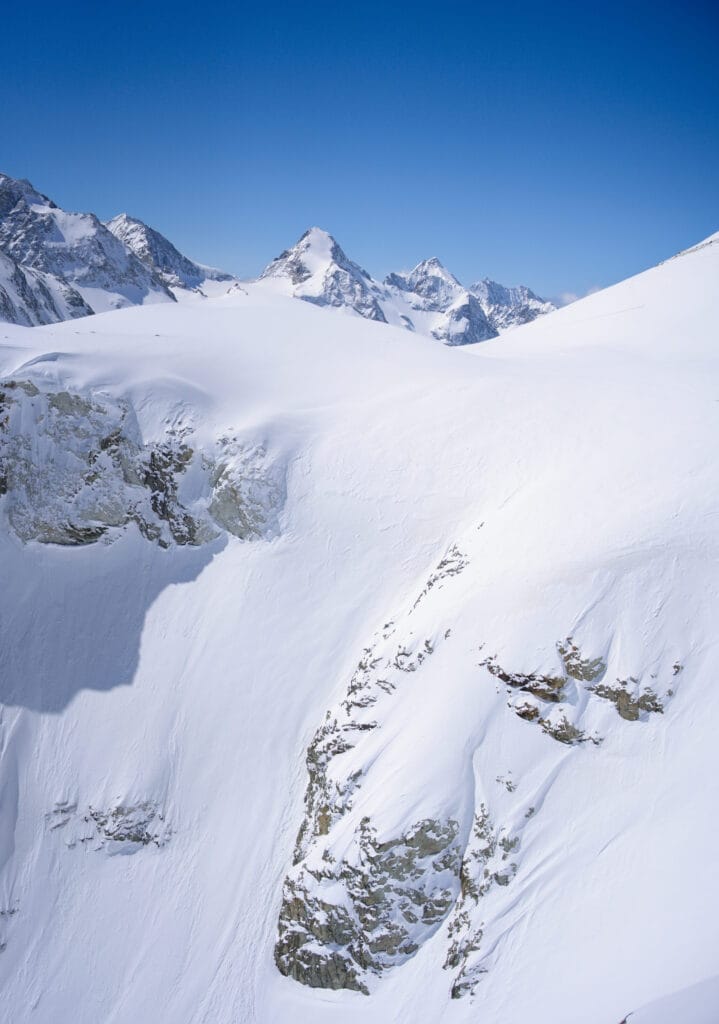
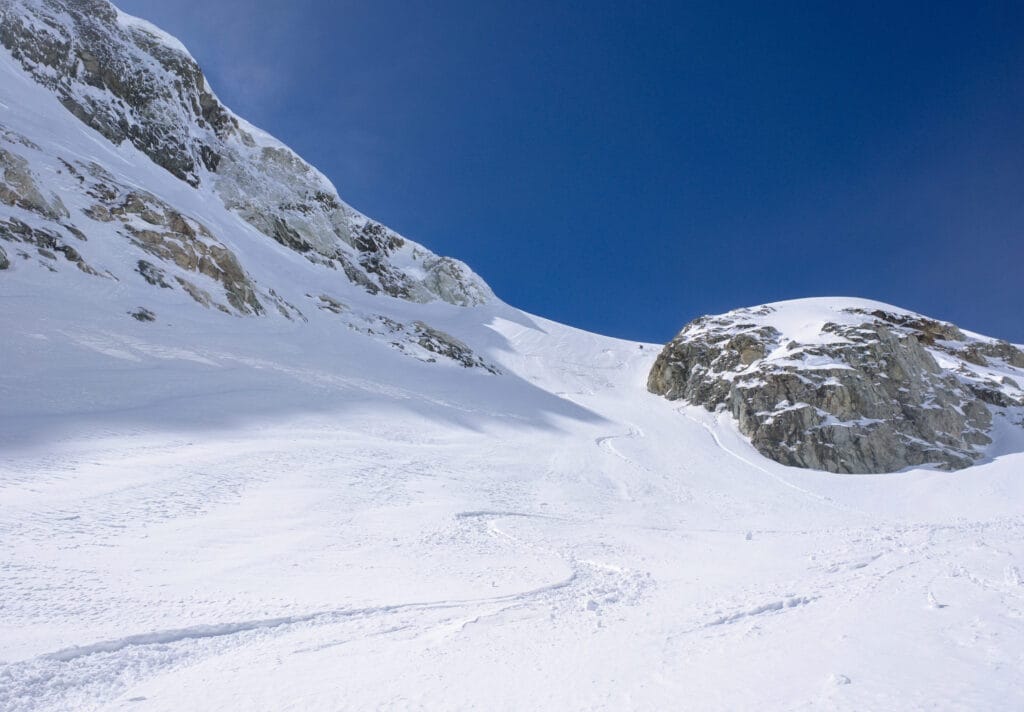
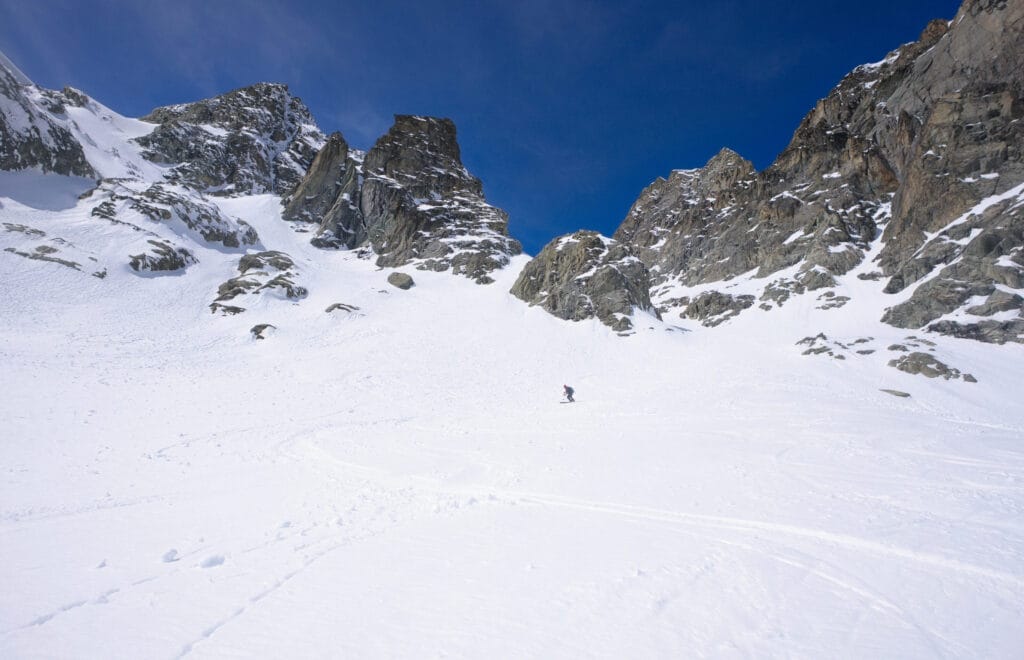
Alpine grade (uphill grade)
It is the equivalent of the mountaineering grading but adapted to ski touring routes, and it is divided as follows:
- F(+), Easy: Slopes up to 30 degrees with low exposure and easy terrain (few obstacles, almost no kick turns required).
- PD (- +), Not very difficult: Slopes from 30 degrees with fairly low exposure (short slides possible, but ending on a gentle slope). The terrain is not very difficult, but kick turns do become increasingly necessary.
- AD (- +), Quite difficult: Slopes from 35 degrees with more marked exposure (risk of slipping with the possibility of braking, possible injuries). The terrain becomes more complicated and a good control of kick turns is required.
- D (- +), Difficult: Slopes from 40 degrees with marked exposure (risk of slipping, sometimes leading to steep slopes). The terrain becomes technical and an excellent control of kick turns is necessary (some passages may require you to take your shoes off).
- TD (and beyond as ED or EX): Slopes from 45 degrees upwards that can only be climbed with skis on the backpack, i.e. not skied on the way up.
Below are a few images of the top of Sasseneire (AD+ grade), where we even had to take off our skis to reach the summit.
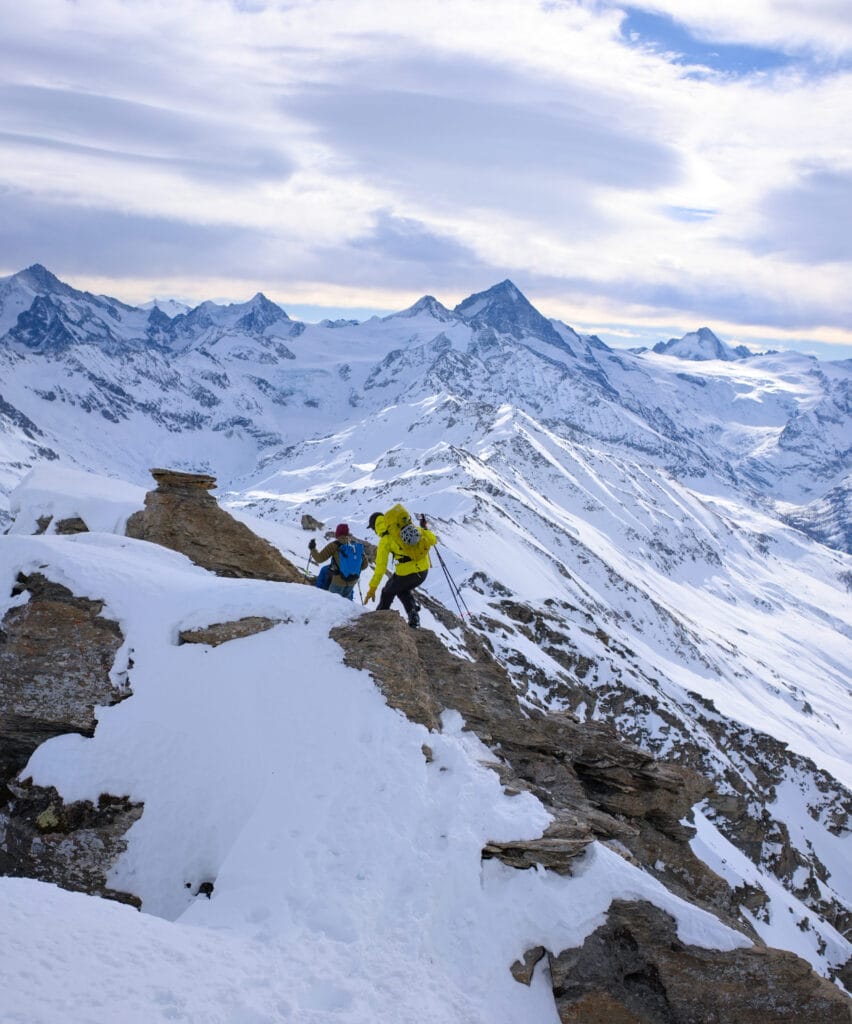
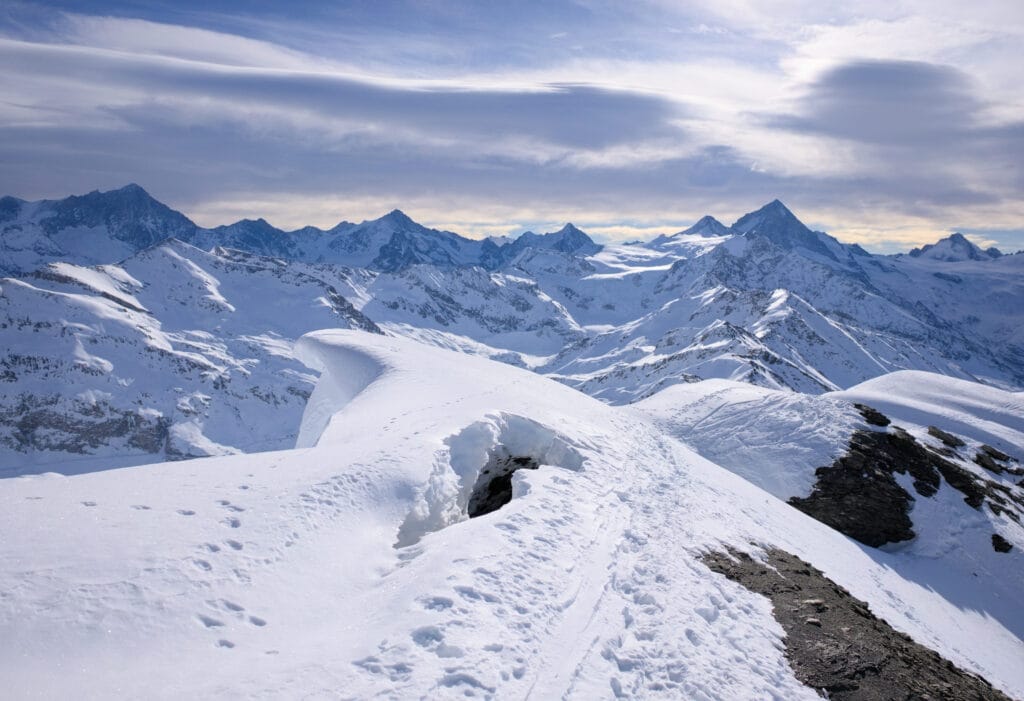
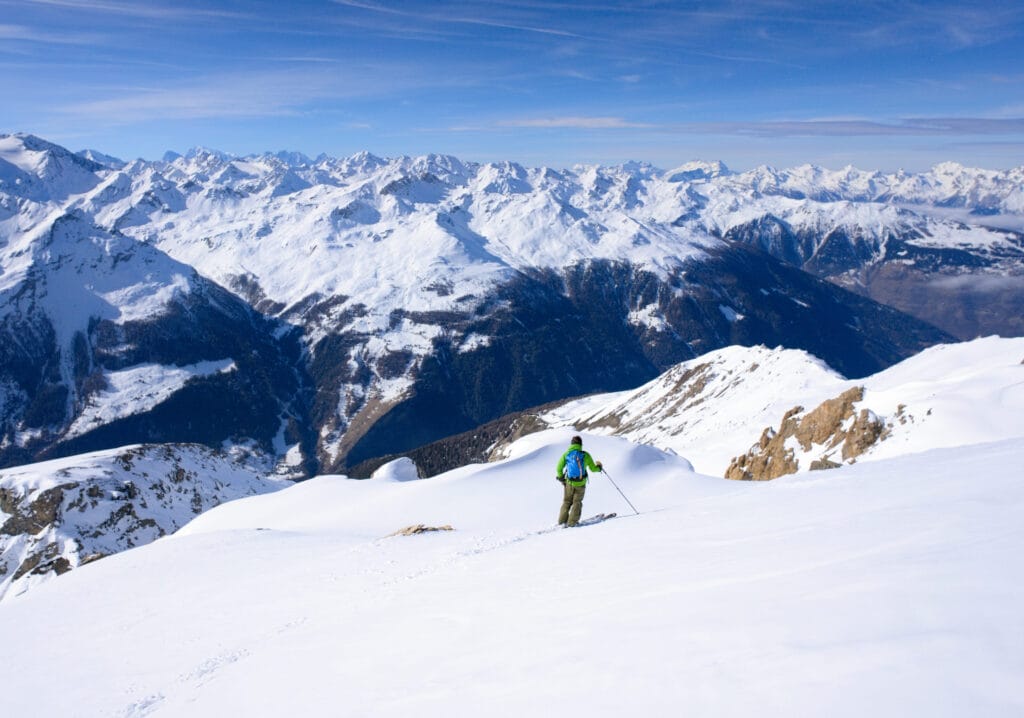
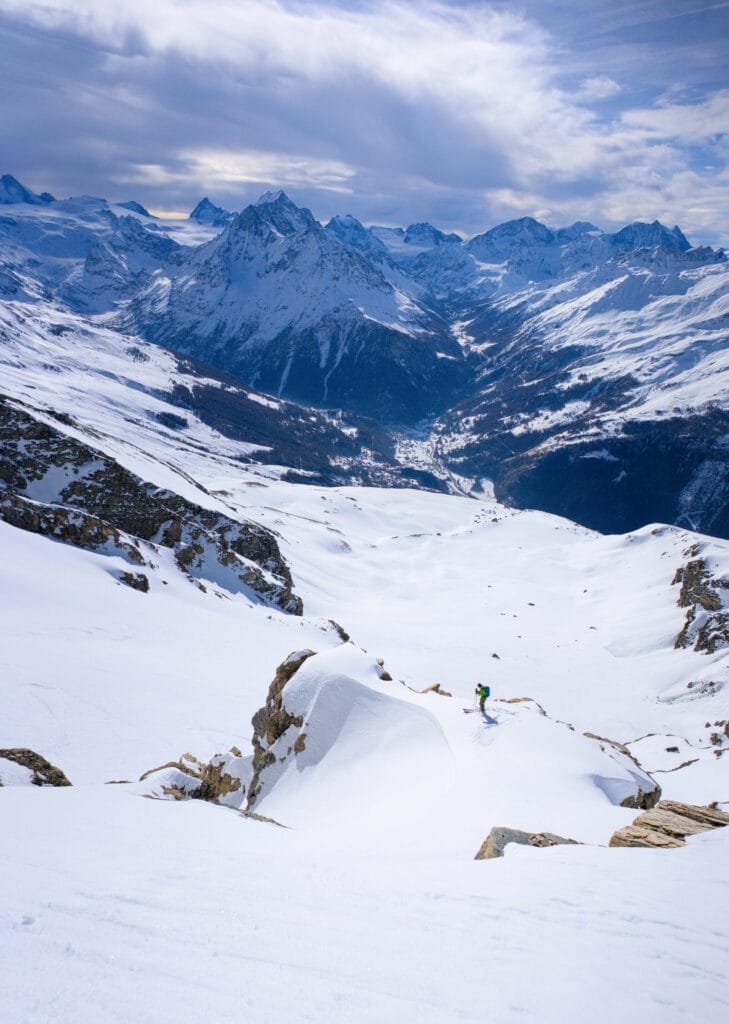
Exposure grade
The exposure grade takes into account only the consequences for the skier in the event of a fall (and not the risk of falling rocks or seracs). This is an important factor, as in ski mountaineering, unlike climbing, the rider skis without a safety system, which can increase the difficulty of the route. There are 4 levels of exposure:
- Exposure 1: There are no major obstacles, and the risk of injury is limited to hard snow and steeper slopes.
- Exposure 2: If there is a couloir, it is wide but may be separated by small rocky bars. Because of the potential obstacles (risk of percussion), a fall can quickly become dangerous (but not necessarily).
- Exposure 3: Steep slopes and narrow couloirs with passage over major cliffs. In the event of a fall, the danger is very high (life-threatening).
- Exposure 4: No-fall zone with high rock faces and multiple rebounds… almost certain death.
The ski grade (or Traynard grade)
This scale, invented by Philippe Traynard, is still used in some books and indicates the difficulty of the most technical section of the descent. It is generally used in association with the alpine grade (or ascent grade). It is divided into 7 levels:
- S1: Very easy route, requiring no special technique (forest road, for example).
- S2: Wide, not very steep slopes (25 degrees) where you simply have to be able to make skids and turns in all types of snow.
- S3: fairly steep slopes up to 35 degrees (black runs in hard snow), where you need to have the necessary skills to ride in all types of snow.
- S4: Slopes up to 45 degrees (if the exposure is not strong), up to 40 degrees if the exposure is stronger, where excellent skiing technique becomes essential. This is the entry level for ski mountaineering.
- S5: Slopes between 45 and 50 degrees if the exposure is not too strong, from 40 if the exposure is strong. It’s best to have your crampons and ice axe in your backpack.
- S6: Above 50 degrees (exposure is usually high on this kind of slope). Also take a piece of rope in your rucksack.
- S7: Passage at 60 degrees or more, with jumps over cliffs in very steep, exposed terrain.
Comments and limitations
One of the main limitations of grading systems is that they don’t take into account snow quality, which can have a massive influence on the difficulty of a route. Imagine a beautiful 40-45 degree couloir. In good, powdery snow, the difficulty of such a slope can be felt to be around a 2 or 3 (toponeige grade). But take the same slope in hard, icy snow, and the perceived difficulty can increase to the highest levels of 5.
Example of the same passage in different snow conditions on the ascent to Pigne d’Arolla ( much easier on the photo on the left):
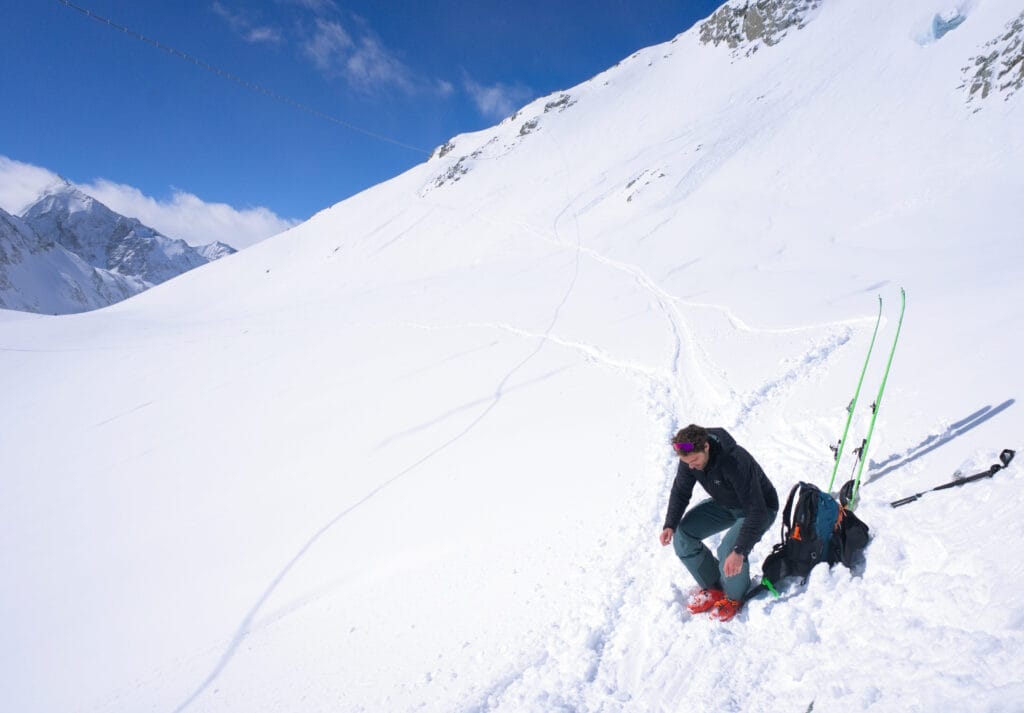
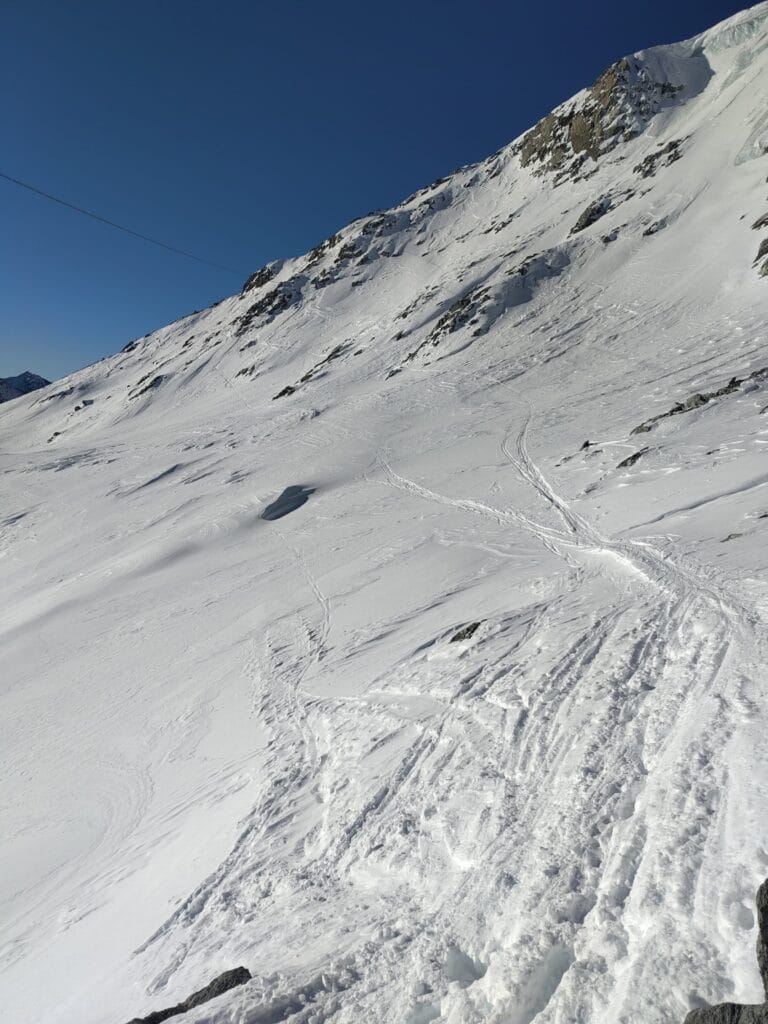
Scoring systems also do not take into account the amount of snow on a route. Some runs can be more difficult in low-snow conditions because of rocks that might stick out. You may fall heavily if you hit a rock, and it’s never fun to damage your skis like that.
Finally, no grading system can warn of avalanche danger. In addition to the snow report, you’ll need to prepare your outing at home, using a map to pinpoint critical areas. Field observations and experience are also essential in minimizing the risk of avalanche incidents when ski touring.
So I hope you’ve found this little post, which clarifies the different ski touring grading systems, useful. I’ll often refer to it in the outings reports I share with you on the blog.
Pin it on Pinterest
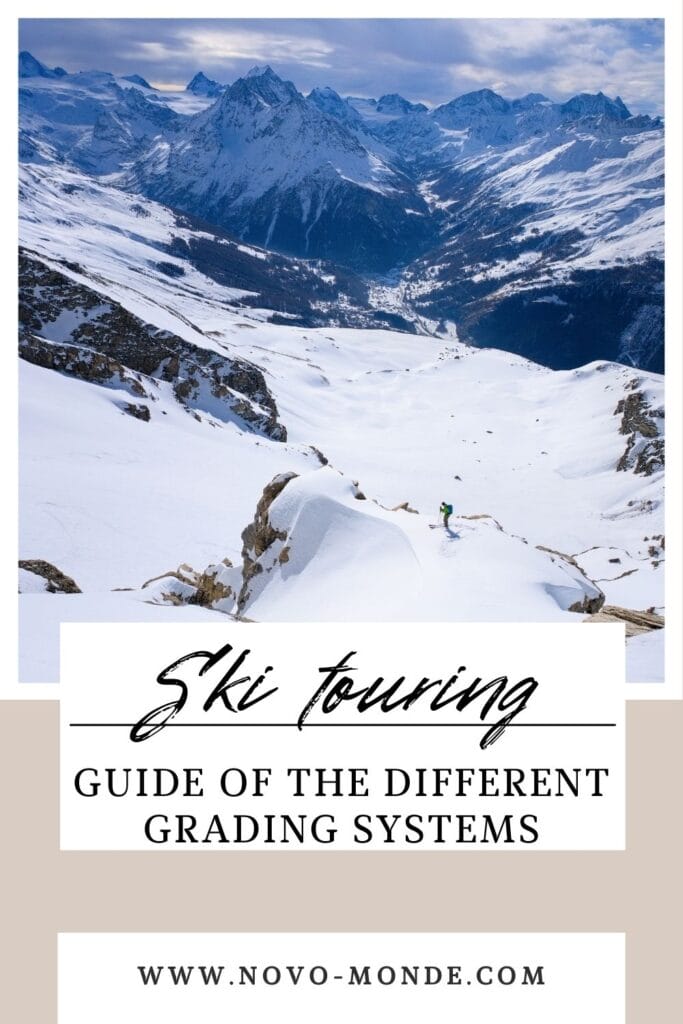
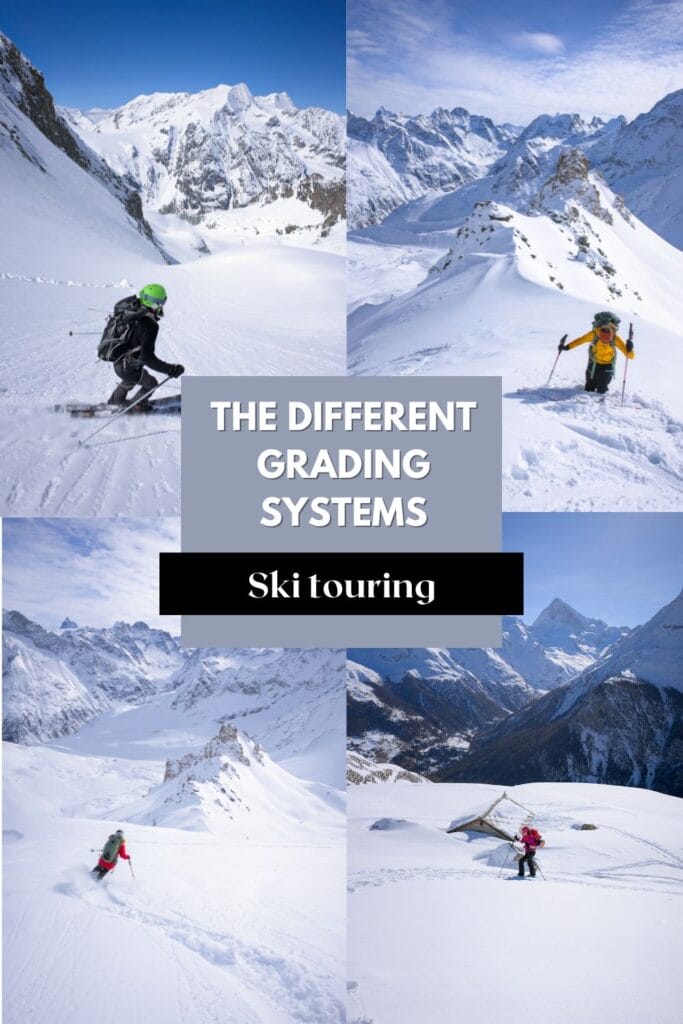
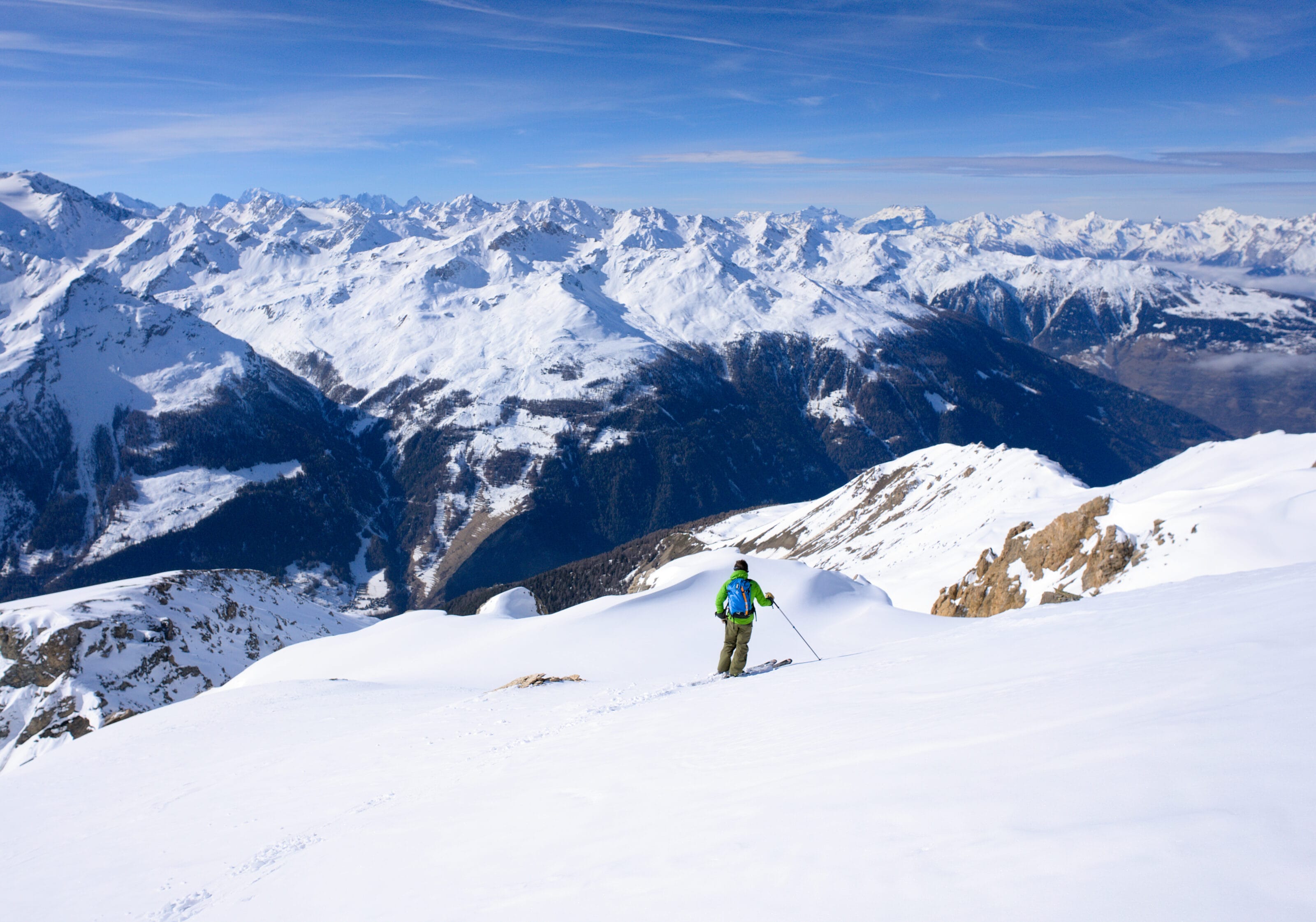

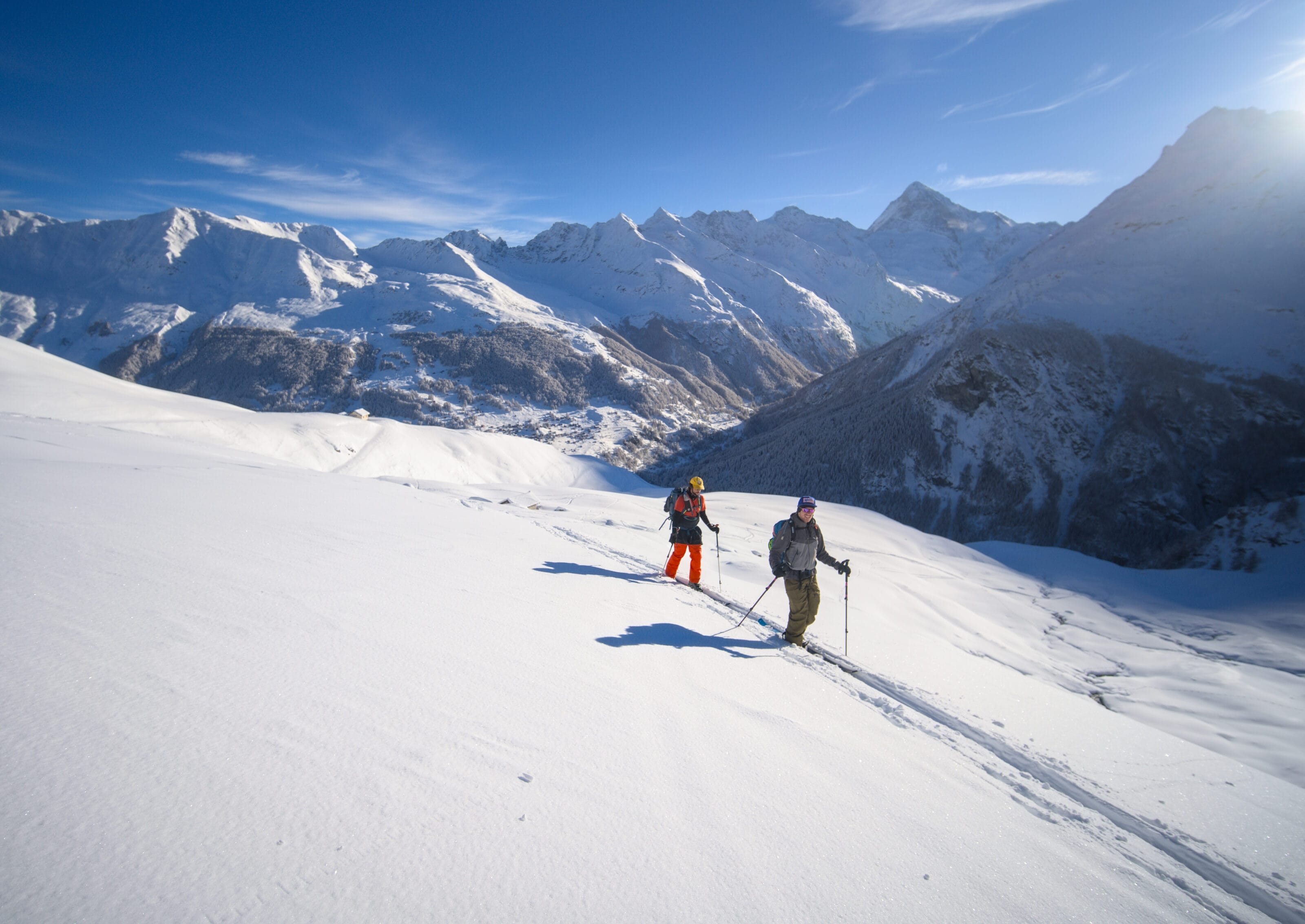
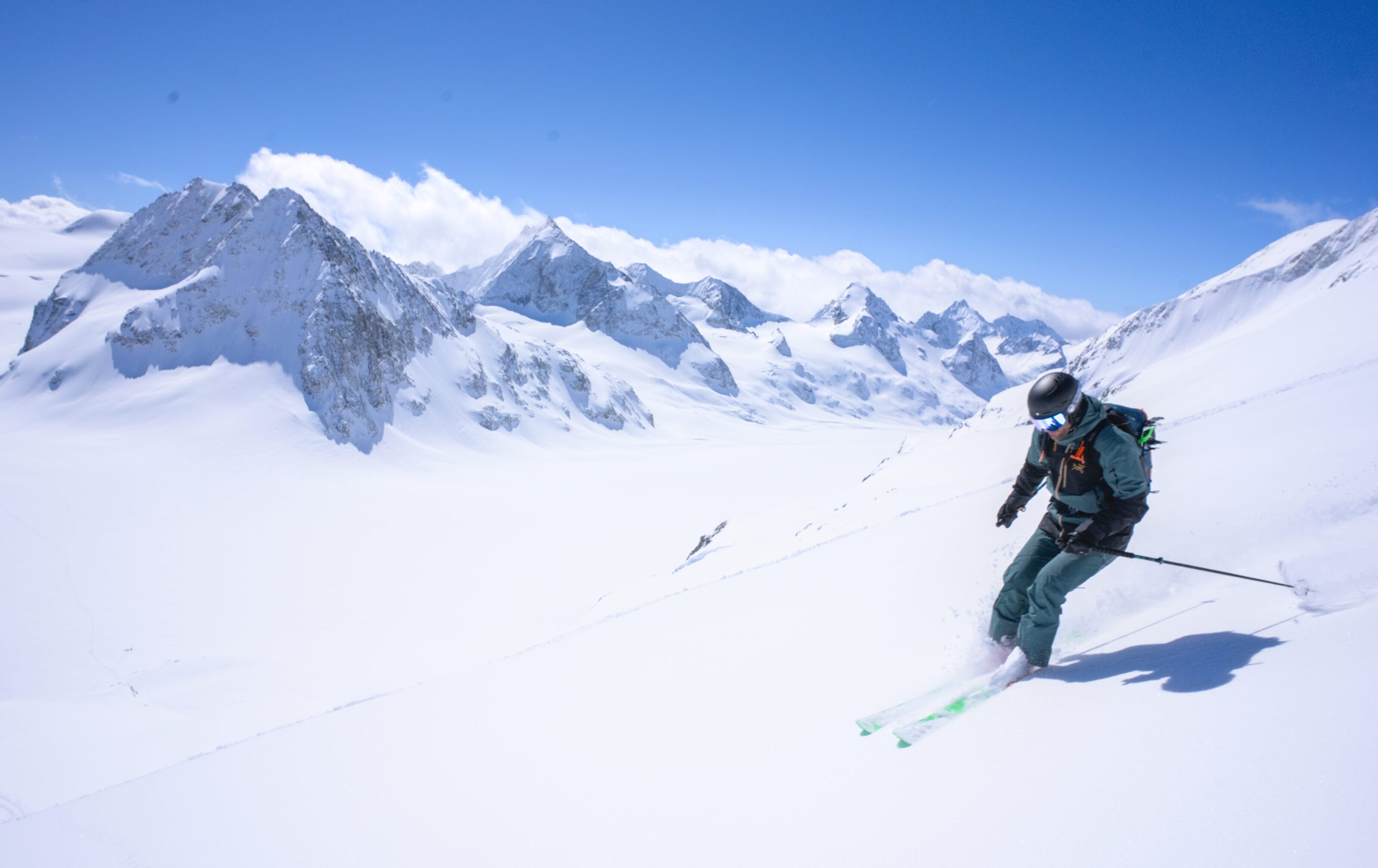
Join the discussion